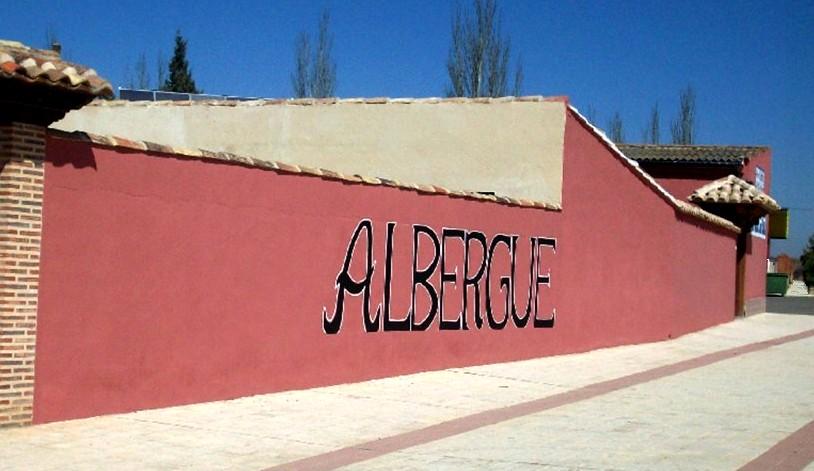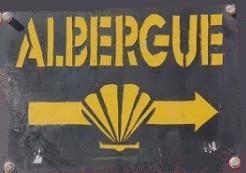Camino de Santiago Accommodation - Albergues and refugios (pilgrim's hostels)
Accommodation tends to be scattered around the 15 to 20 kilometre marks so it may be worth finding out where each albergue or refugio is before you start your trip and plan your route before you leave taking into account any unforeseen circumstances. Also take into account that you are likely to have blisters, sore feet, sore legs and any other injury, have alternative accommodation in place.

Refugios are now more commonly becoming known as Albergues and each year more and more are opening up, whether they be privately, municipal or Xunta owned. Most placed now have bunk beds but some may still be a mattress on the floor. The rooms are usually dormitory type and are not split into male or female, they are all mixed so you will be sharing.
These places are noisy, if it's not someone snoring then it will be someone getting up in the middle of the night to go to the bathroom and even your fellow pilgrims getting an early start to the next day's trek.
Your Credencial or Pilgrim's passport will get you into the refugio, you will be refused entry if you don't have one, so always keep it safe and easily accessible in your back pack, don't put it right down at the bottom.
Refugios/Albergues come in all shapes and sizes and as mentioned previously are owned either by the government, local councils, religious groups, associations or are owned by private individuals. Some but not many are free, some want a small donation, but most have a fixed rate usually somewhere in the region of 4 to 5 euros, but check before you go. Unlike hotels you cannot pre-book your accommodation it is very much on a first come first served basis.
Some towns and villages have hostals, pensiones and other types of accommodation all of which will be chargeable. It may be worth looking online to see if they have a website to see how much they charge.
Some good advice
As mentioned previously if you walk the complete Camino from France you are walking the equivalent of 20 marathons. You will more than likely have sore feet with the odd blister or two. At the end of each day why not take advantage of soaking your feet, preferably in water that contains salt. If you can't do this take some tea tree oil, aloe vera or something similar with your to rub into your sore feet.
Before you begin your Camino each day make sure you have protected your feet by rubbing them with Vaseline or some form of blister protector. The best way to protect your feet from blisters is making sure you have the right footwear and socks.

As it is very likely that you will get the odd blister or two you will need to mindful of ensuring that they don't get infected. You can pierce a blister, but don't cut away the skin around itas this will inevitably become infected. Cover a blister with a blister patch or use something that will cushion the area. In your first aid kit take along some aspirin or ibruprofen, some form of anti inflammatory. This will not only help with swollen joints but also with tendonitis.
Above all take it easy. You don't have to do the same amount of walking every day. Some days are going to be tougher than others. If things do get too much most towns have a medical centre, they are used to dealing with pilgrims with foot problems.
When walking it's worth considering what you eat. We've all heard that marathon runners fill up with pasta the night before. This is true about long distance walking. You should have mainly carbohydrates that slowly release energy, taking a banana or two with you is ideal. Eat some protein but not too much as it can dehydrate you and have some fats that will also give you energy.
Unlike a marathon you are not in a race. If you are tired rest a day and continue the next. If you feel that you can't complete the full Camino start at a different point along the way. As long as you finish the last 100km you will get a Compostela.
If you are a light sleeper invest in a good pair of ear plugs as there will be a lot of noise in the Albergues, especially from snorers. Even if you are not a light sleeper it may be a good idea to take some along with you.
Take along a small bottle of sanitiser. You can't always wash your hands before you eat. At least with this you can help reduce any germs.
Pace yourself
If you are starting at St Jean de Pied Pont you have 798 kilometres to walk to Santiago so you want to pace yourself. Obviously this will depend upon your fitness and the time you have allocated to undertake your pilgrimage, but aim for approximately 20 to 25 kilometres a day. Some people do actually do 30 kilometres a day. Don't try to do too much, you don't have to do the whole Camino in one go, you can return to complete it.
If you are going to do the Camino in its entirety you will need to allow at least a month, maybe a little more if you are finding the going a little tougher than anticipated. An alternative is to do various sections in 2 week blocks at different times of year or over a few years. There is no set time frame to complete the Camino. The only proviso to get your Compostela is that you walk the last 100 kilometres to Santiago and you have your Credencial stamped.

